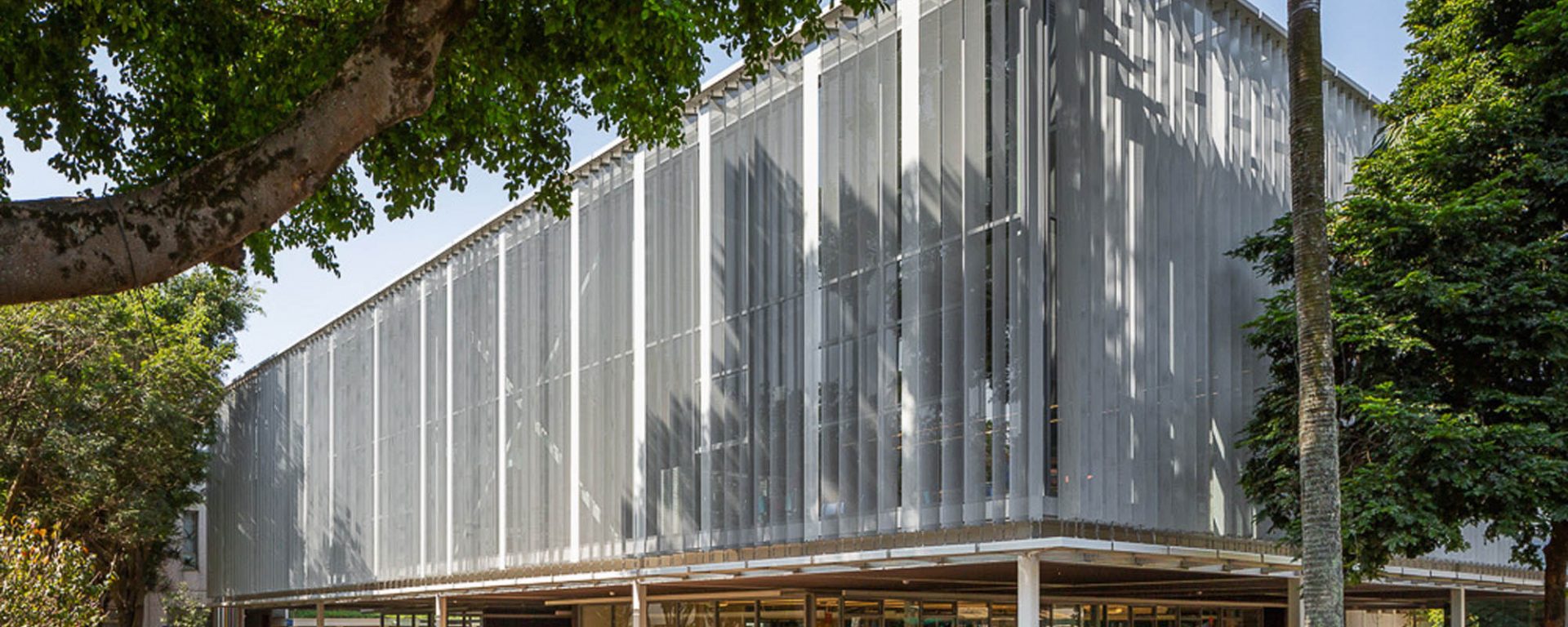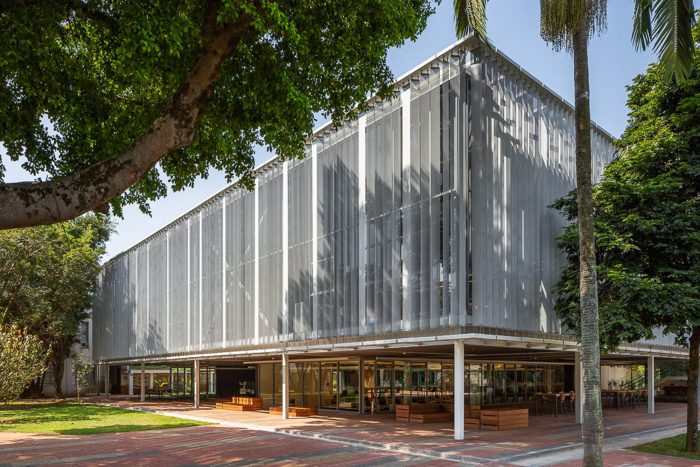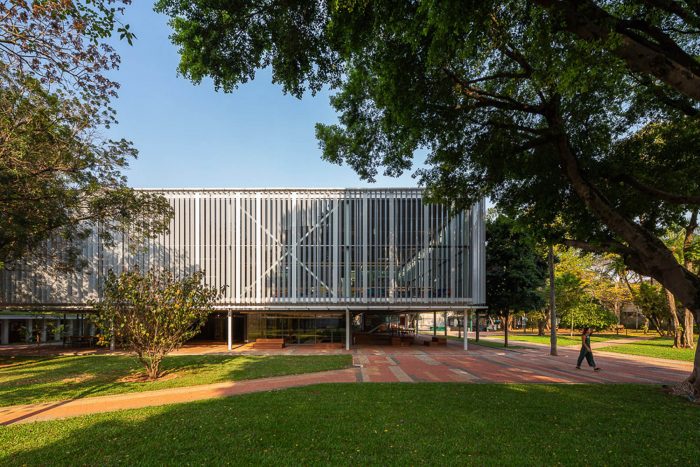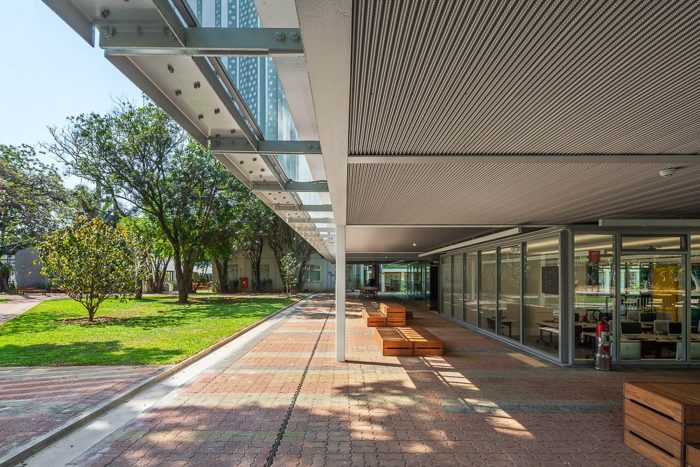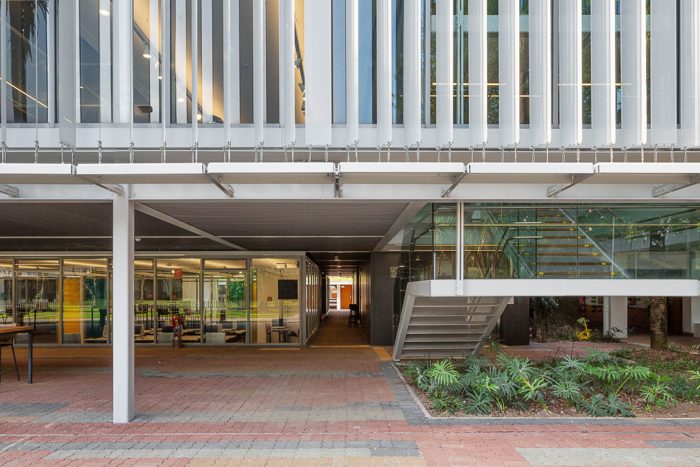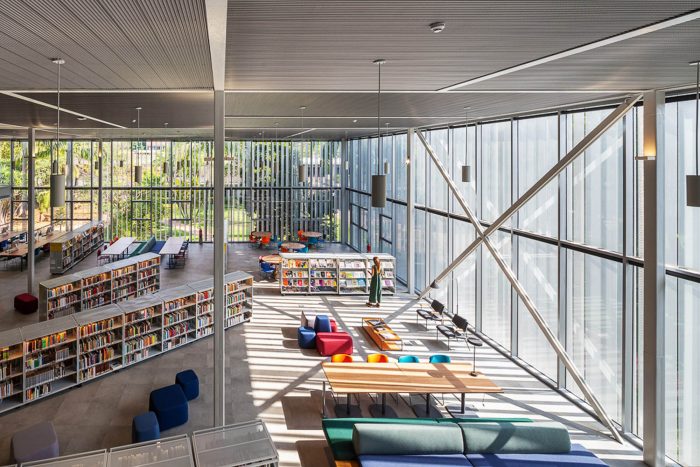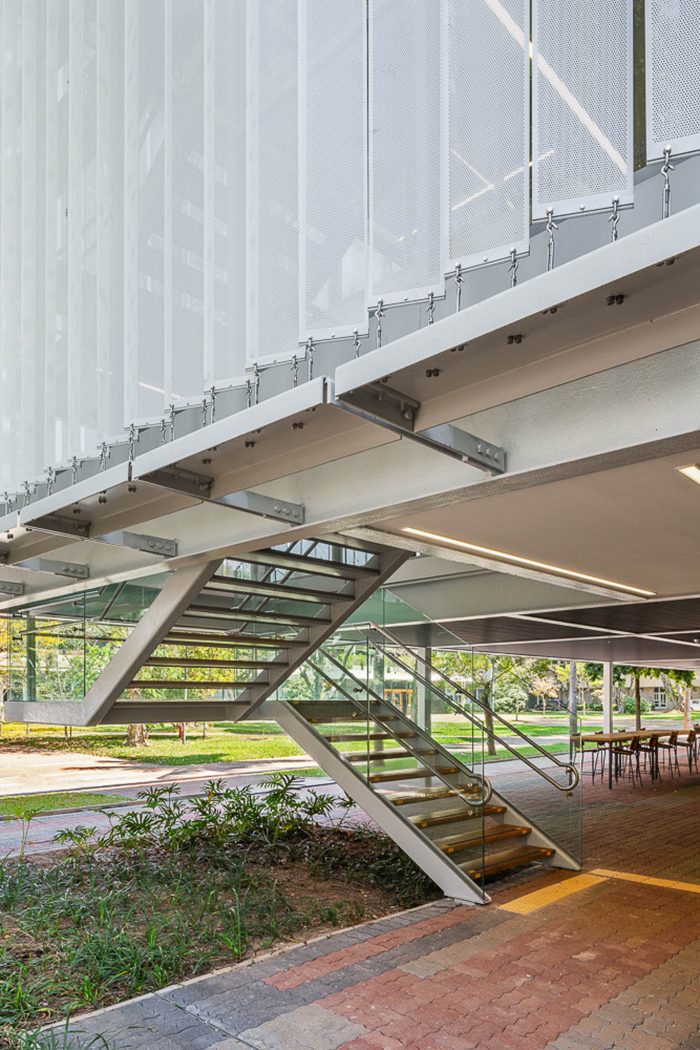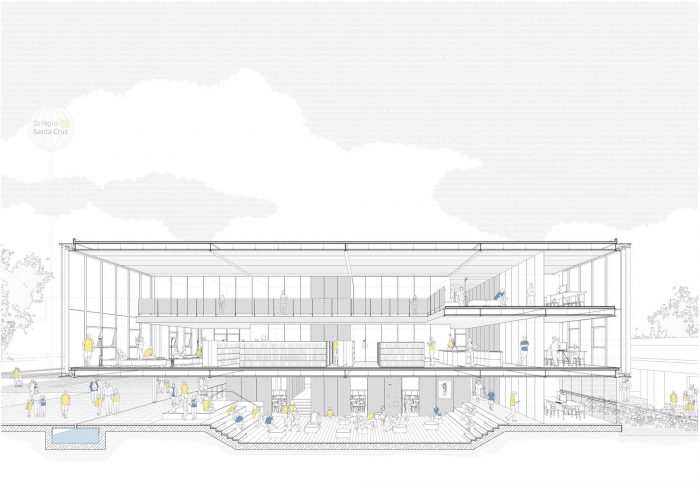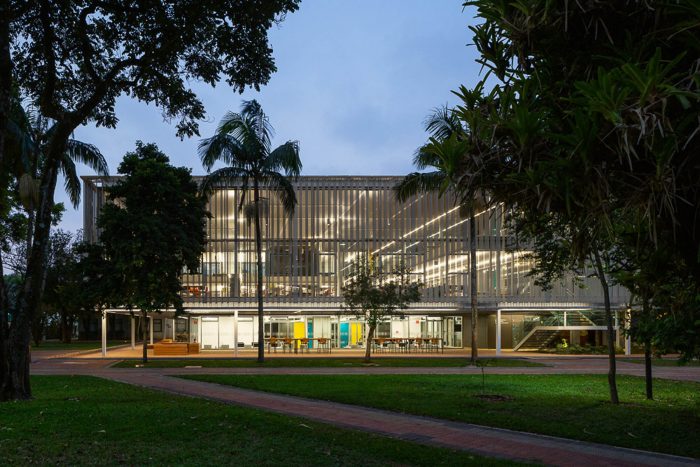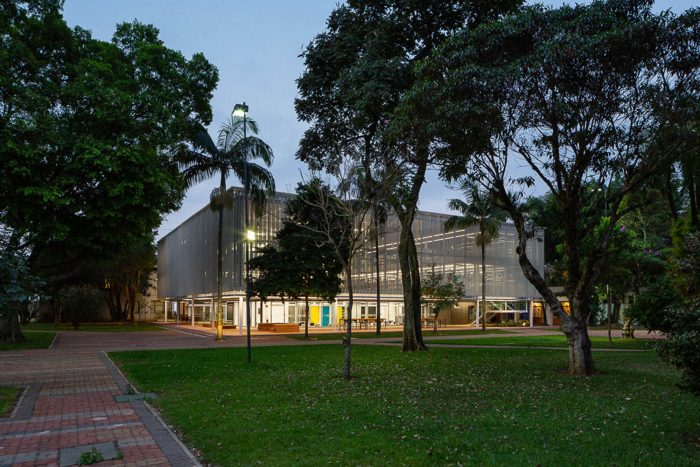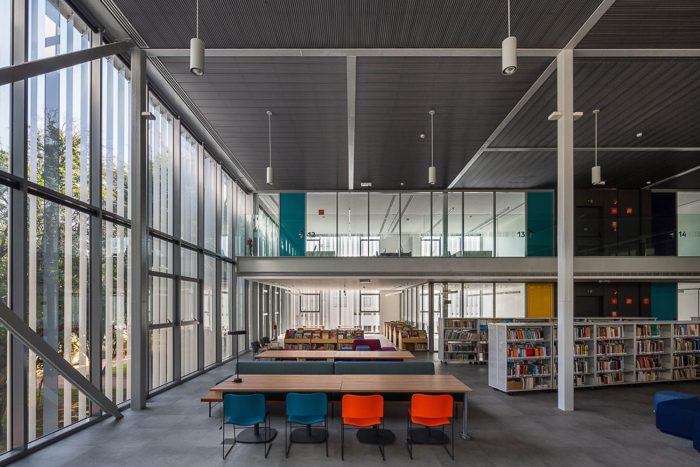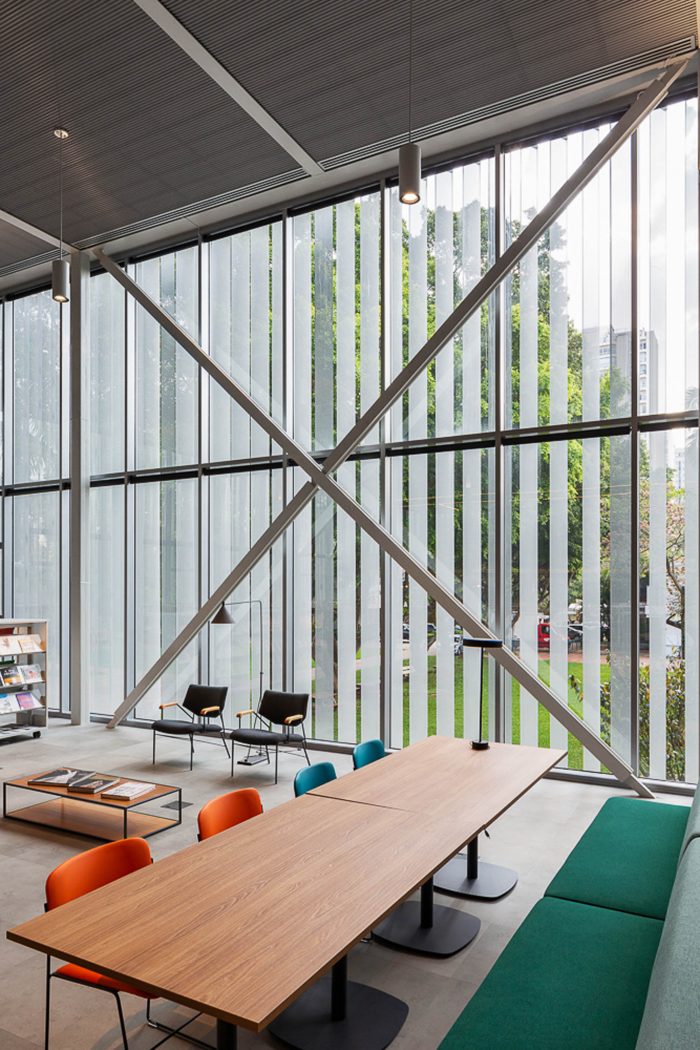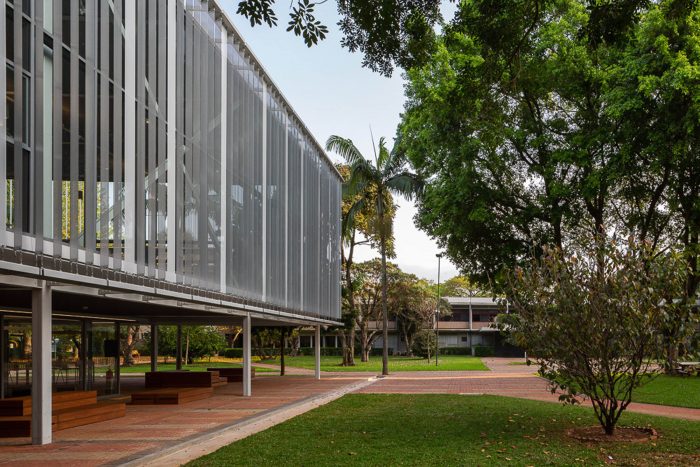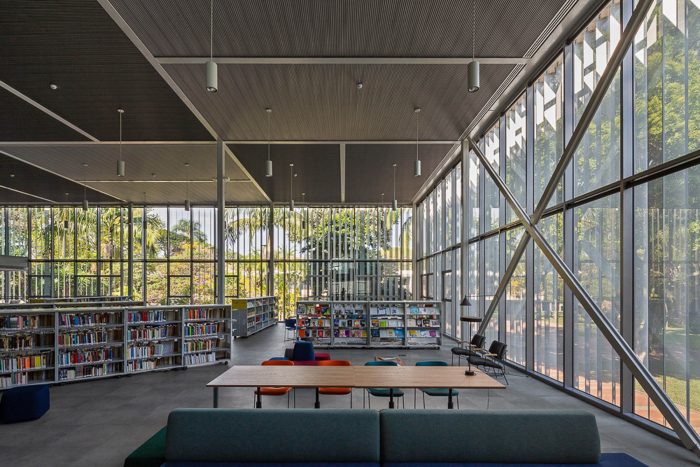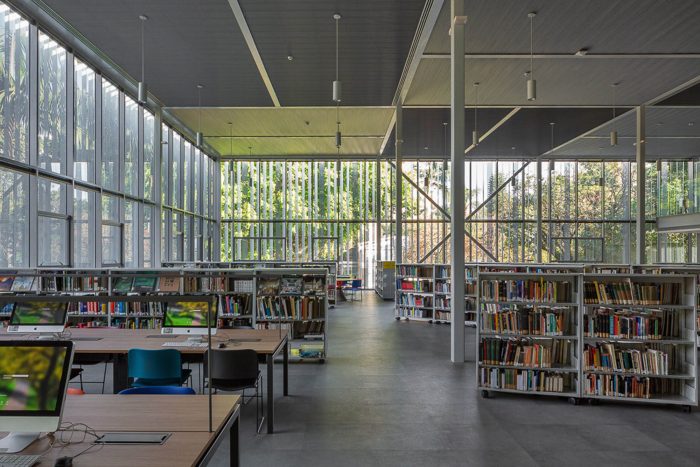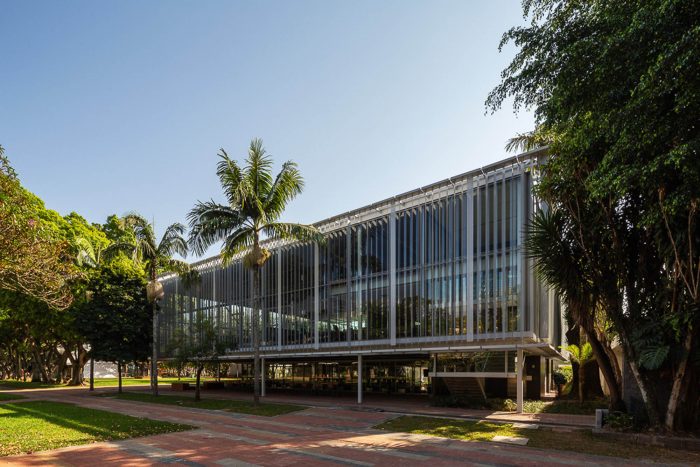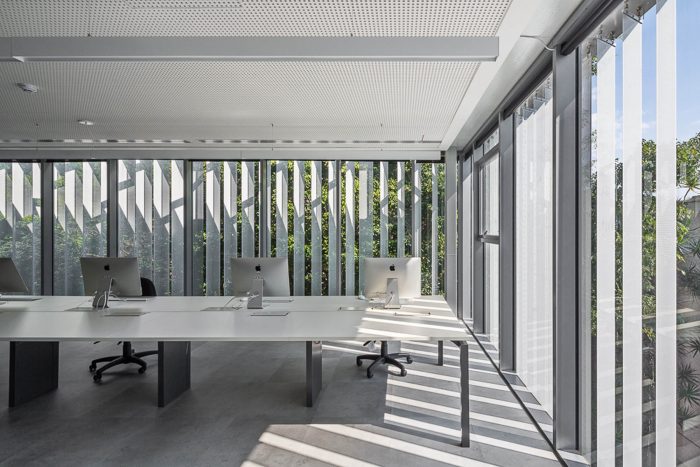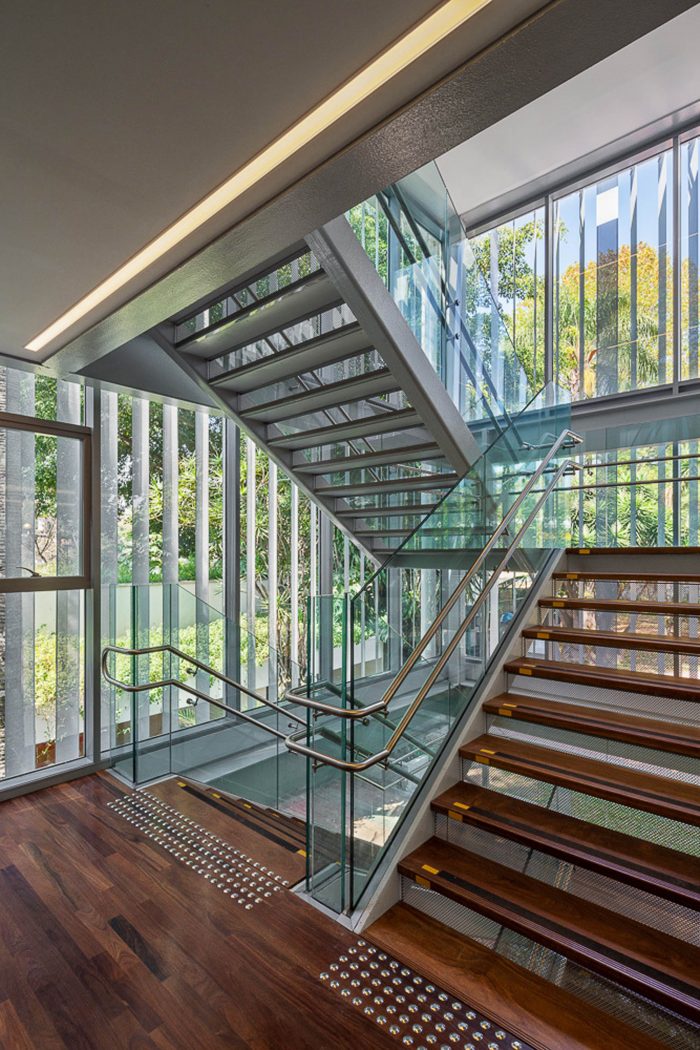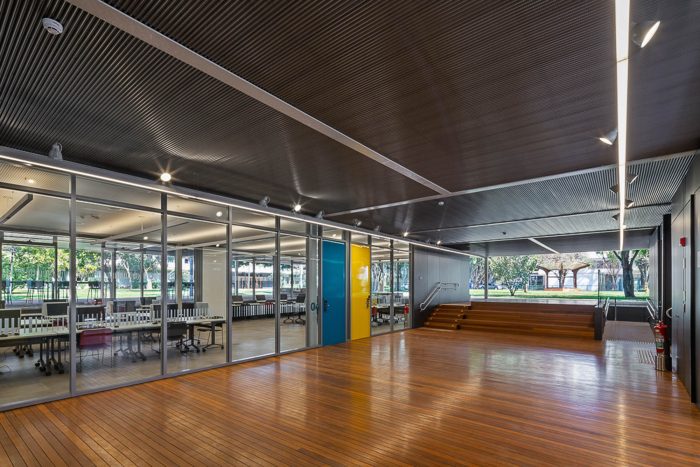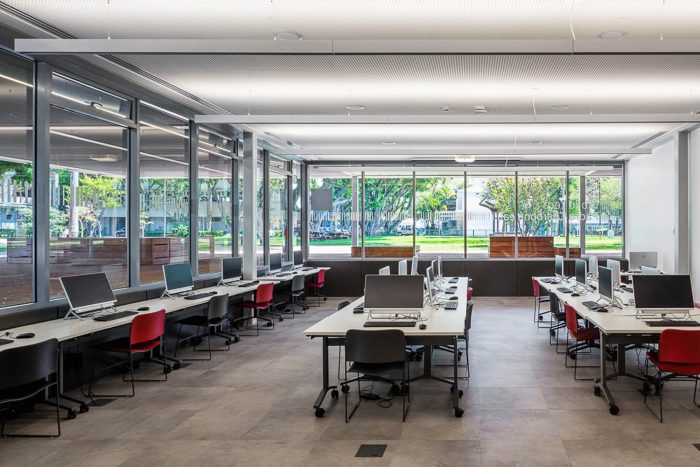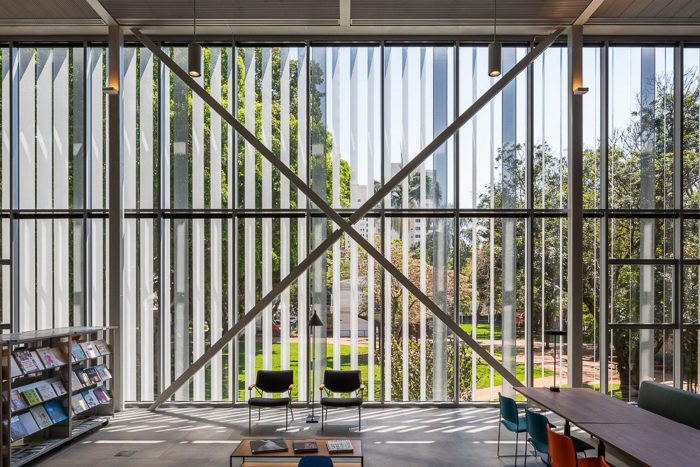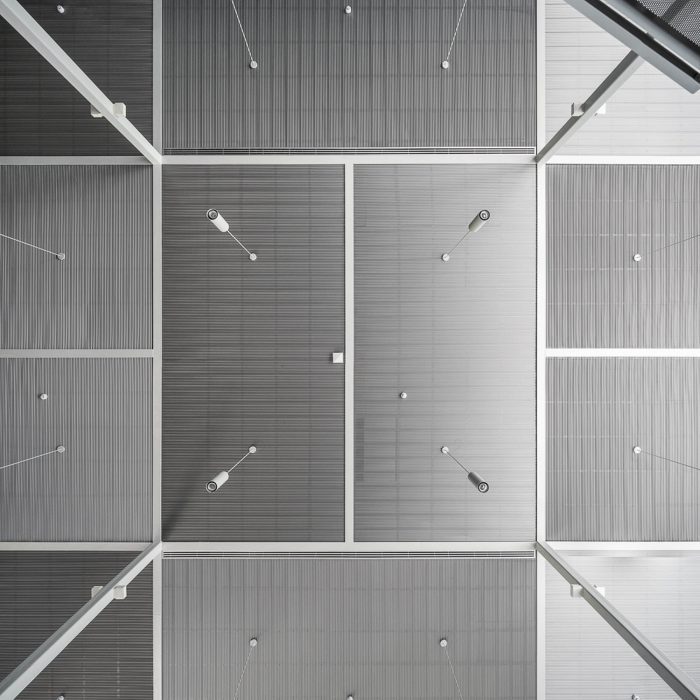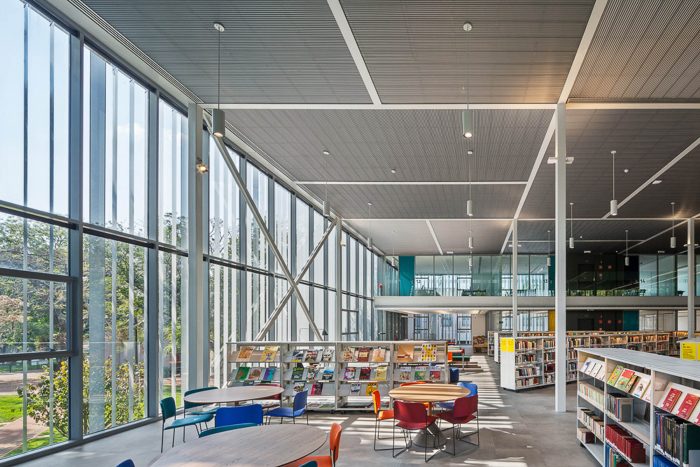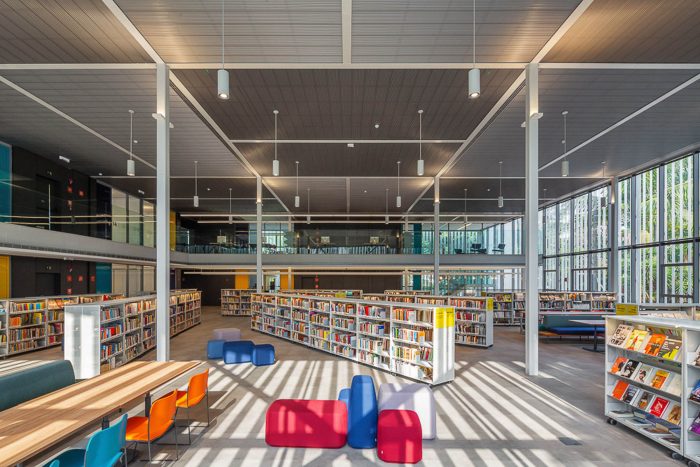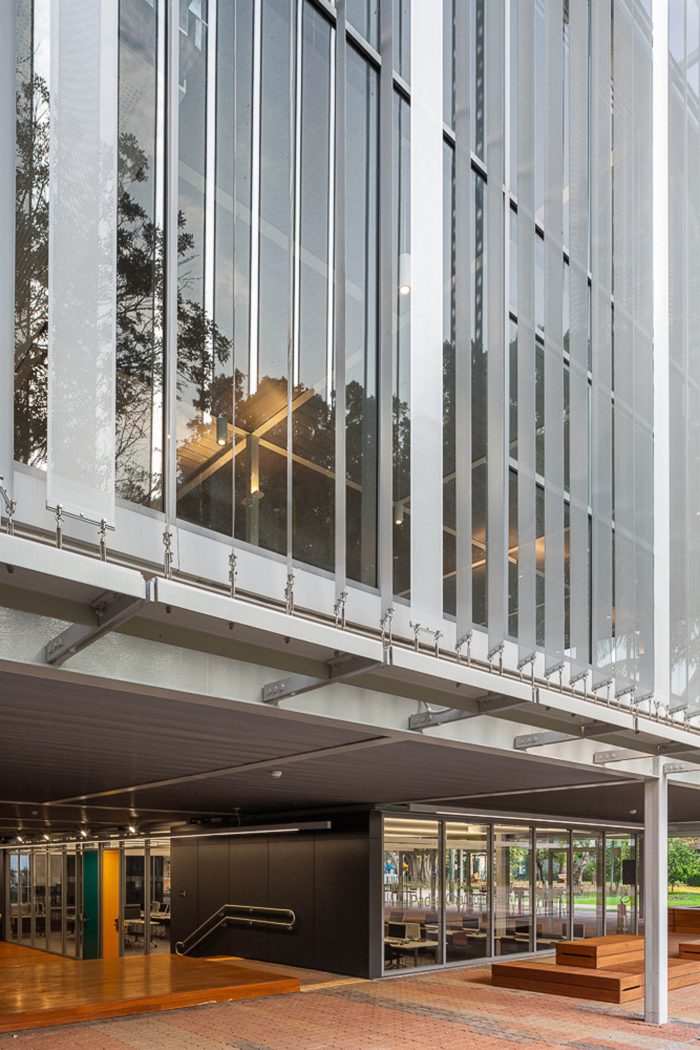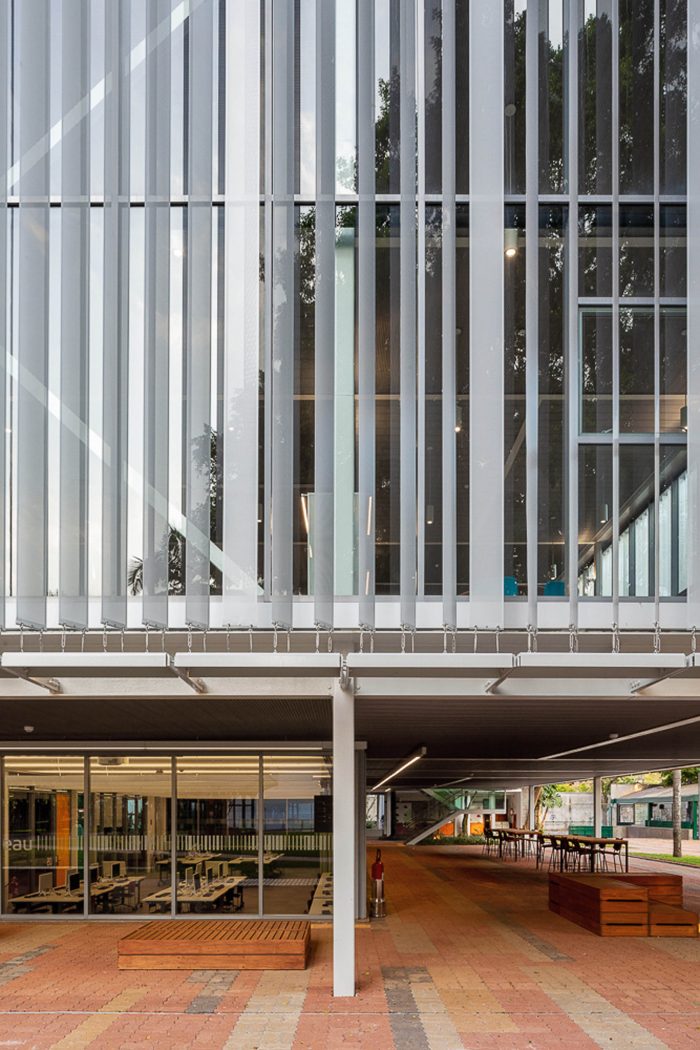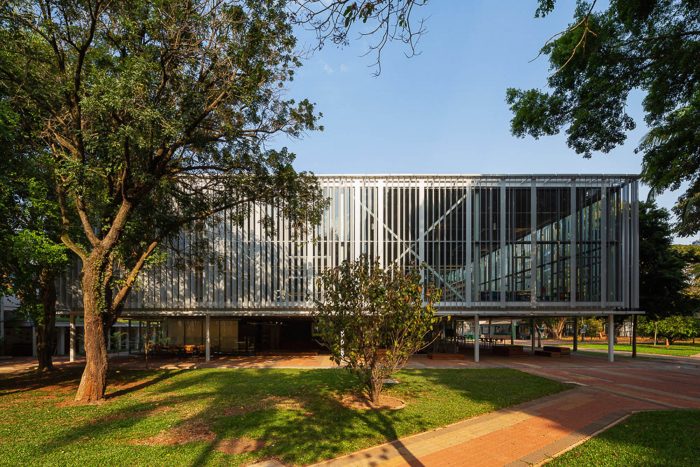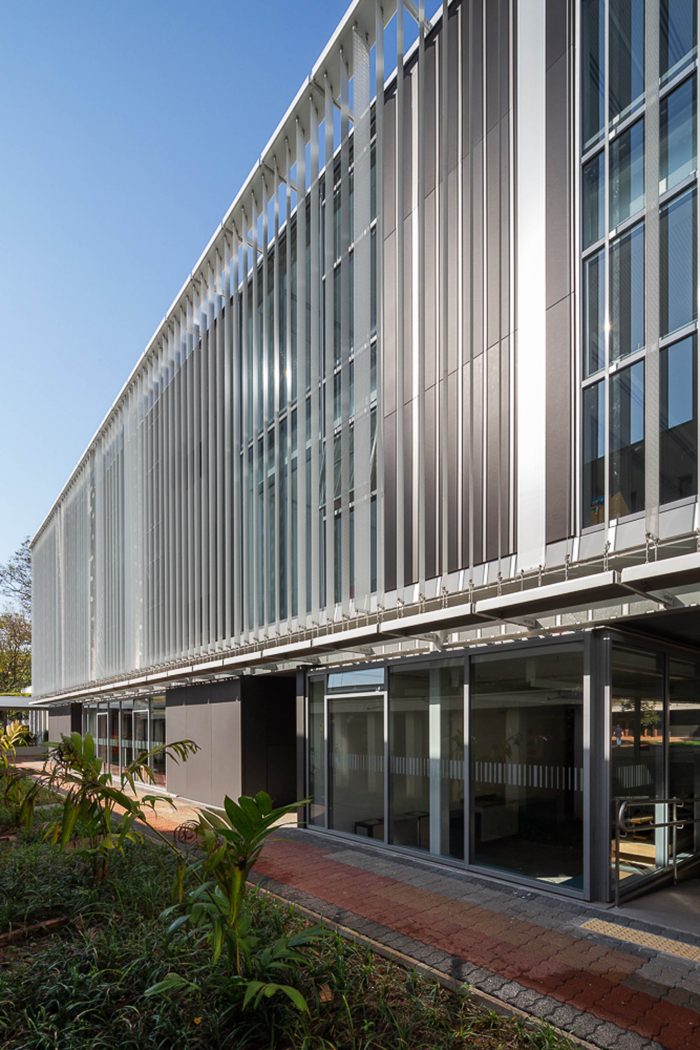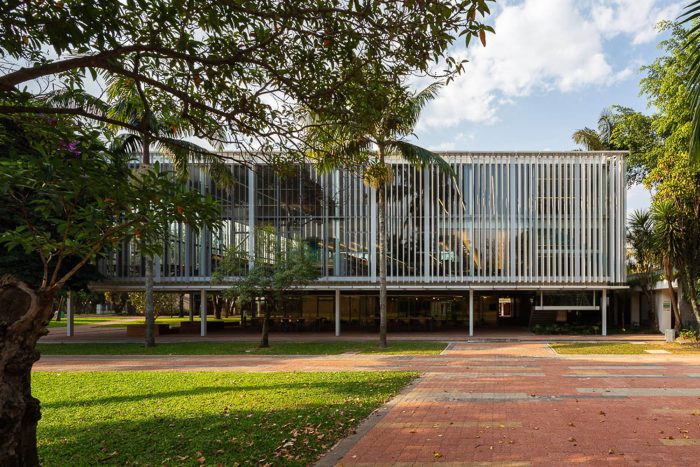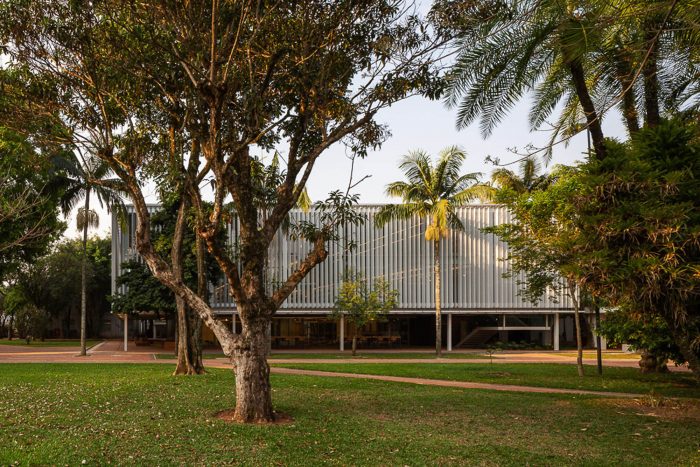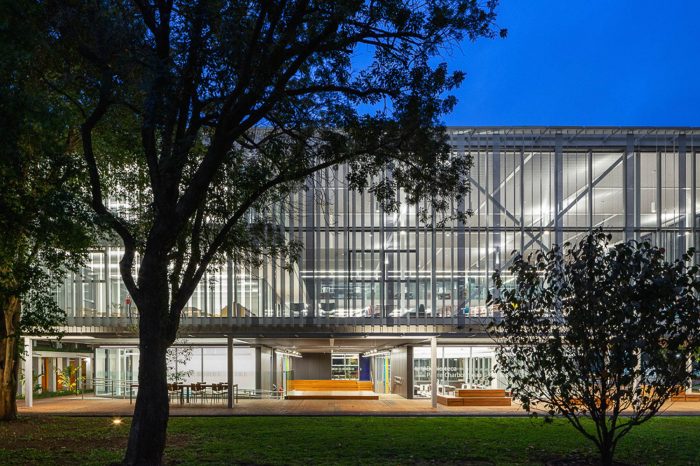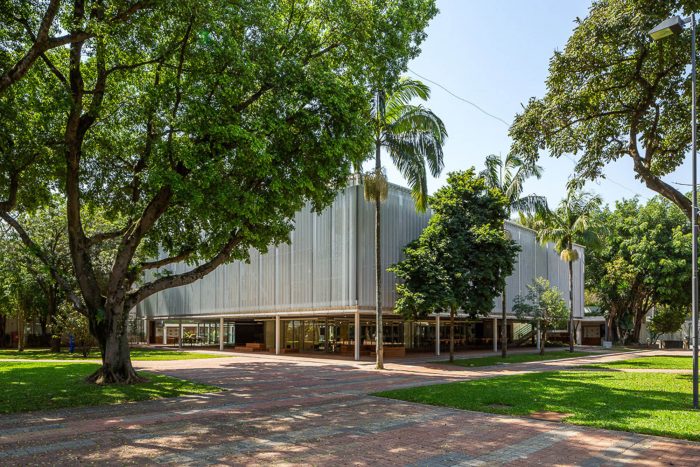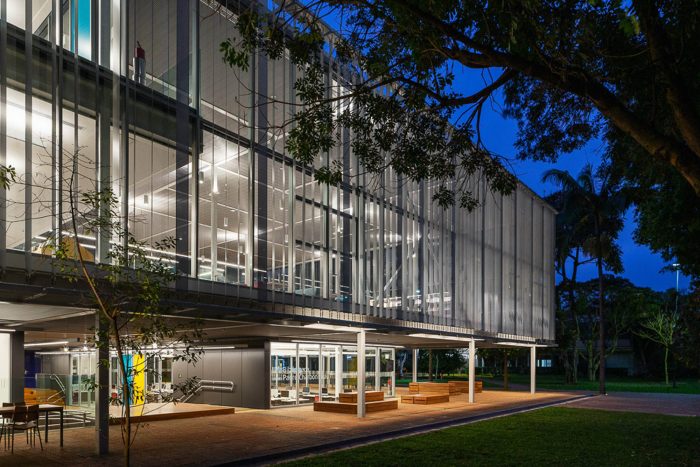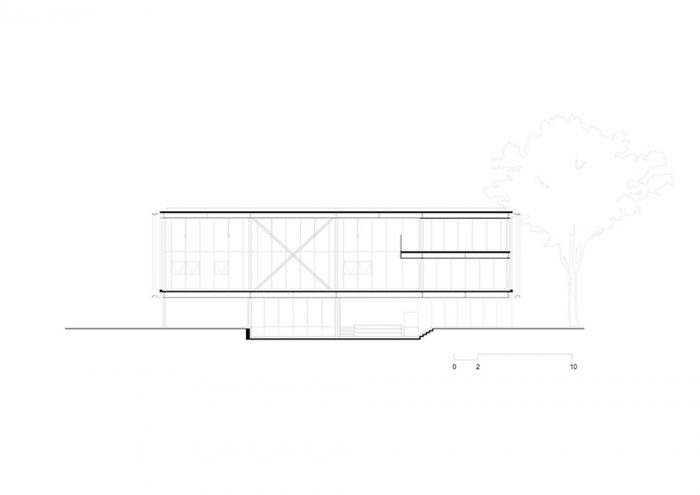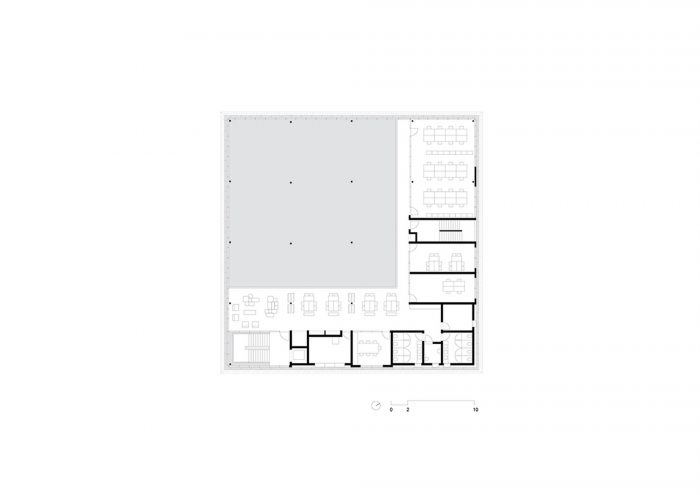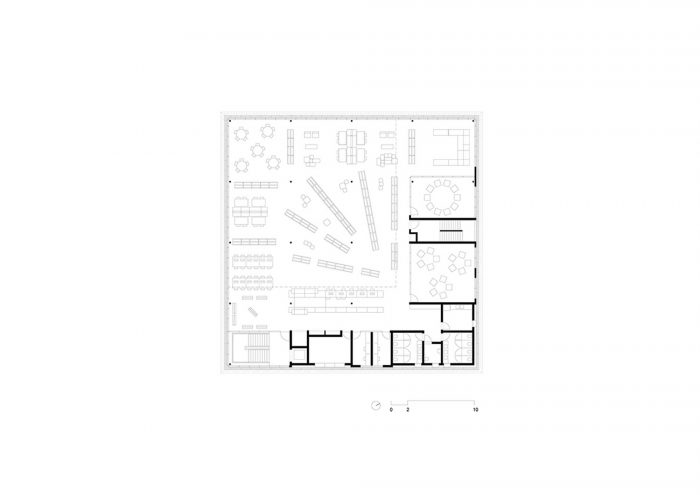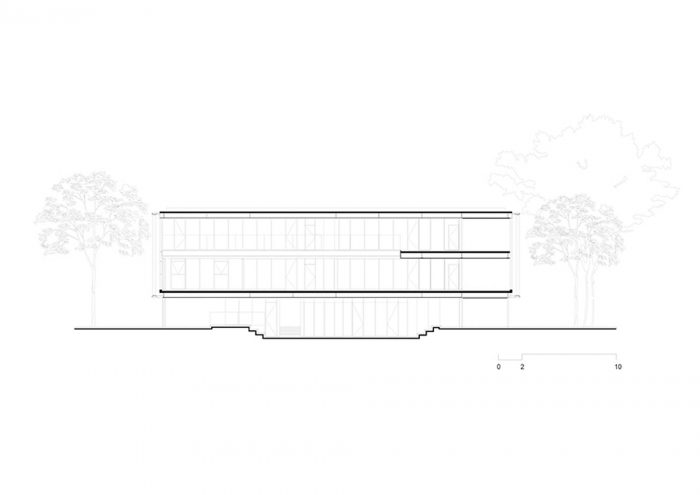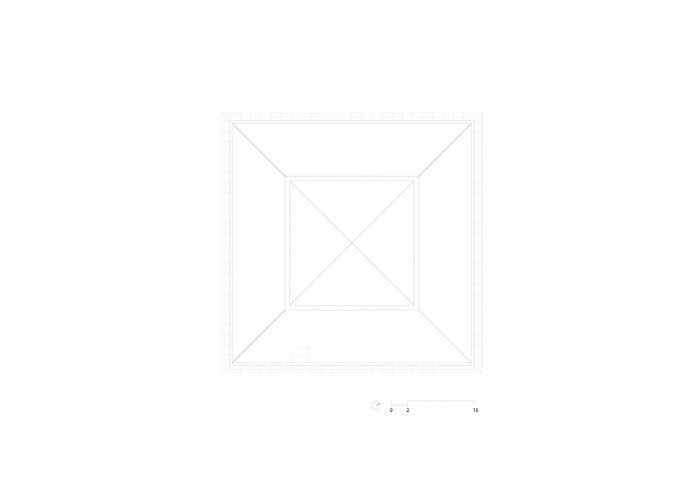Colégio Santa Cruz是圣保罗重要的传统学校之一,在校园现代化和重组的过程中,出现了新图书馆的竞赛,目的是实现自由区域的整合。由于位于校园中心的优越的占地面积,最初的项目与建筑的重要性不相称,因为它没有与整个环境融合。
The contest of a new library of Colégio Santa Cruz, one of the important traditional schools of São Paulo, emerged throughout the process of campus modernization and restructuring, with the aim of free areas integration. Due to the privileged footprint, at the centre of the campus, the original project was not corresponding to the building importance, since it was not integrated with the whole environment.
该项目建议包括对建筑群和校园自由区域的全面看法。导致了干预的概念,这有助于环境,而不是作为一个孤立的物体的建筑性能评估。
The project proposal consists of the comprehensive view of the building complex and campus free areas. Leading to the concept of intervention which contributes to the environment, ahead of the building performance appreciation as an isolated object.
现场考察使我们能够理解重要的职业动态,就像自由区域用来提供生活空间和社会互动一样。对动态的理解对项目的发展和方案的重新安排至关重要。地面层作为自由空间是人流和社交的最重要方面之一,加强了会议空间的方面。
The site visit enabled the understanding of important occupational dynamics, just as free areas used to provide living spaces and social interaction. Dynamics comprehension became essential for the project development and program rearrangement. The ground level as free space is one of the most important aspects for people flow and socialization, strengthening the aspect of a meeting space.
图书馆的主要空间被放置在上层,保留并悬挂在地面上。计算机和 “创客 “室被重新安置在底层,构成了一个紧密的核心。因此,热闹的活动是在图书馆的安静空间之外,这是在上层。夹层由行政室和控制区组成。除了这个区域,整个图书馆有双倍的天花板高度,提供了一个宽阔和灵活的空间,这也是指导项目的方面。
Library principal space is placed on the upper floor, preserved and suspended over the ground. Computer and “maker” rooms were relocated on the ground floor, composing the close nucleus. Consequently, buzzing activities are outside the library quiet space, which is on the upper floor. The mezzanine is composed by administratives rooms and control areas. Beside this area, the whole library has double ceiling height, providing a wide and flexible space, aspects that guided the project.
垂直流通和服务核心变得更加全面。此外,核心部分被重新安置在外墙上,提供自然通风和照明。为了促进综合体的欣赏,在地面布局上发现了一个显著的方面,在城市化和景观上出现了一个清晰的几何图案。从这个观察中,我们想到了通过简单的几何形状来设计建筑的概念。使得新的建筑能够和谐地插入圣克鲁斯校园。
Vertical circulation and services core became more comprehensive. Besides that, cores were relocated on the facade, providing natural ventilation and lighting. In order to contribute to the complex appreciation, one remarkable aspect was identified on ground layout, a clear geometric pattern present on urbanization and landscaping. From this observation, the idea to concept a building through geometric simple shapes. Enabling the harmonious insertion of the new building at Santa Cruz campus.
建筑物被安排成一系列的方块,提供活动的灵活性。此外,结构的概念来自于一个简单的网格,没有大的跨度,允许轻盈的体积,以及快速和经济的施工。
The building was arranged as a series of squares, providing activities flexibility. Moreover, the structure concept was projected to stem from a simple grid, without large spans, allowing the light volumetry, besides the fast and economic construction.
建筑系统建议由数量较少的工业元素组成:由钢型材和板块混合而成的超级结构;预制混凝土板、铝和玻璃细木工板;干式墙体实习区;还有修剪过的工业化组件,其原理是通过轻型和调制结构来保持和改进。覆盖方案被简化为金属结构和金属瓦片。
The constructive system proposal is composed by a reduced number of industrial elements: a super- structure mixed of steel profile and slabs; prefabricated concrete panels, aluminium and glass joinery closures; dry-wall intern divisions; and also trim industrialized components the rationale construction were kept and improved by the light and modulated structure. The coverage solution was simplified with metallic structure and metal tiles.
Architects: Andrade Morettin Arquitetos Associados
Area: 1786 m²
Year: 2020
Photographs: André Scarpa
Manufacturers: REKA, Artalum, Deca, Fernando Jaeger, Hunter Douglas, Iguzzinni, Novidario, Ovo, Paulo Alves, Pertech, REFAX, Riccó, Securit, Veda
Architects (Principals):Vinicius Andrade, Marcelo Morettin, Marcelo Maia Rosa, Renata Andrulis
Project Coordinators:Izabel Sigaud; Eduardo Miller
Design Team:Raphael Souza, Fernanda Mangini, Murilo Zidan, Daniel Zahoul, Fernanda Carlovich, Guilherme Torres
Engineering:Ycon Engenharia
Landscape:Marcelo Faisal Paisagismo
City:São Paulo
Country:Brazil

